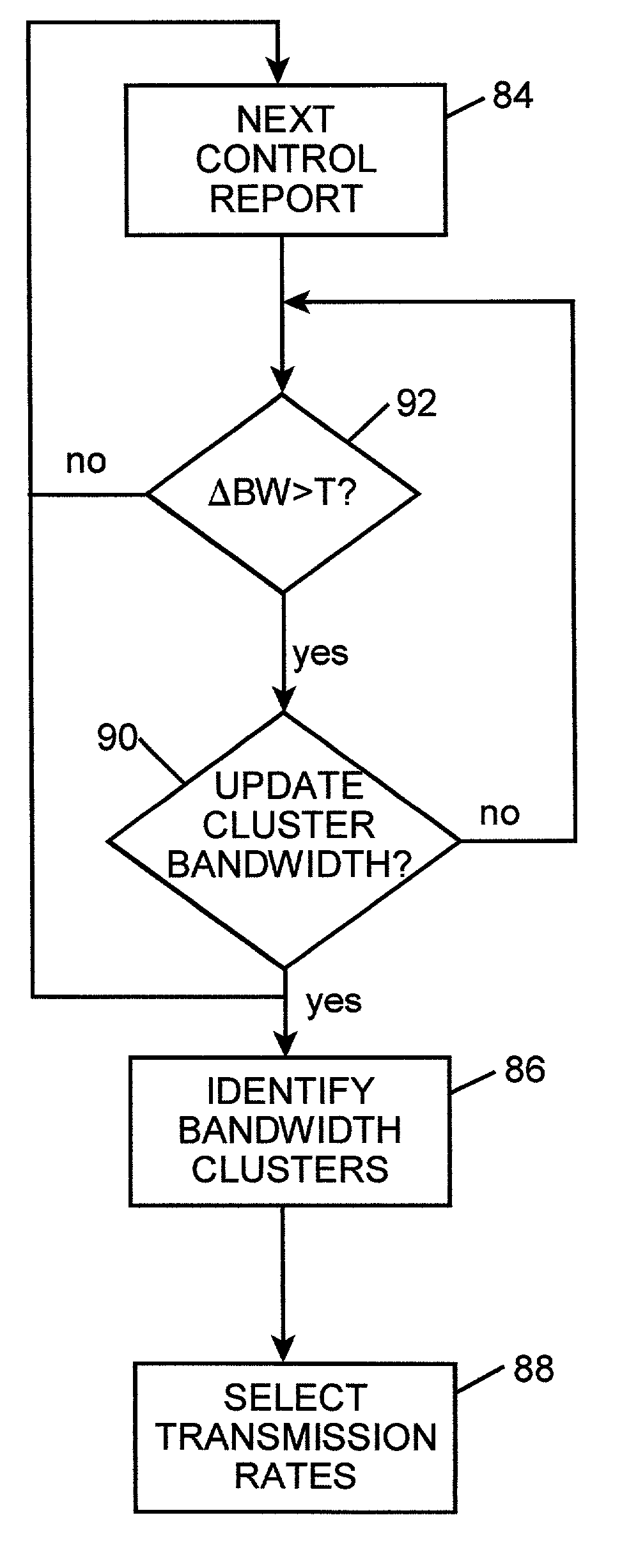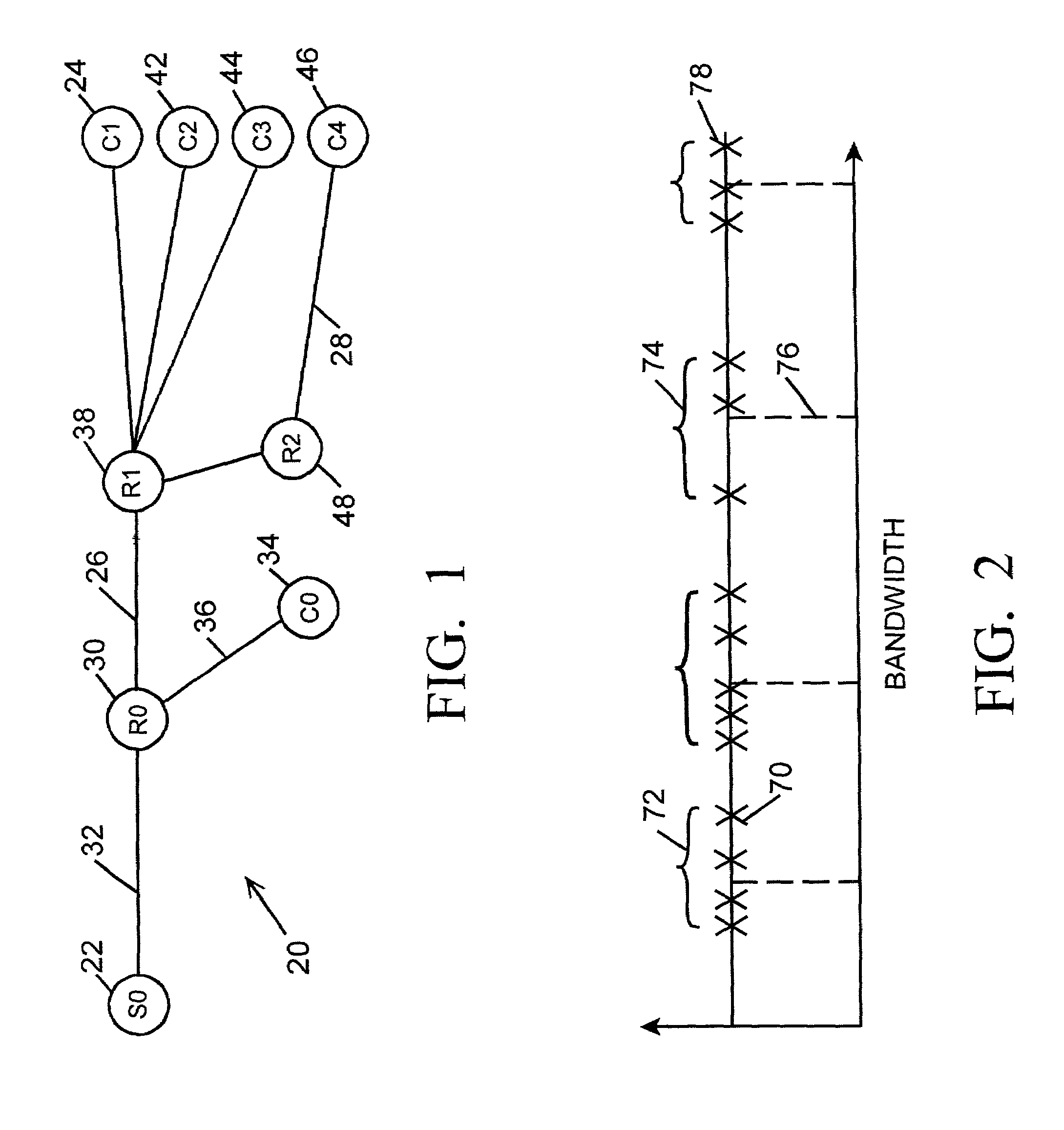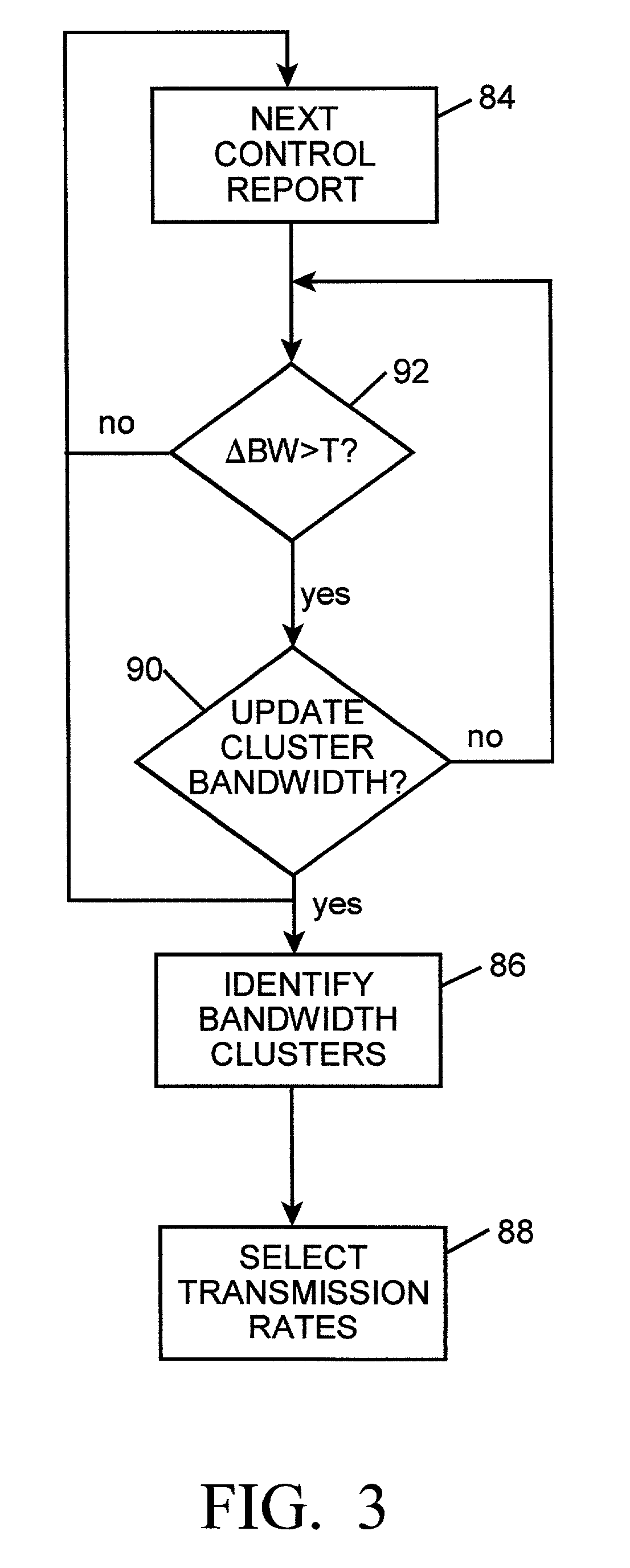Transmission rate selection for a network of receivers having heterogenous reception bandwidth
- Summary
- Abstract
- Description
- Claims
- Application Information
AI Technical Summary
Problems solved by technology
Method used
Image
Examples
Embodiment Construction
[0014]Referring to FIG. 1, a data processing network 20 comprises a collection of nodes (for examples, nodes 22 and 24) connected by communication links (for examples, links 26 and 28) over which data can be transferred between end systems, the devices at network nodes that permit remote users to access information transmitted over the network (for examples, nodes 22 and 24). Network applications are often designed so that one computer or end system acts as a server (S0) 22 managing network traffic and providing services and data to receiver end systems or clients (for example, client (C1)) 24 attached to the network. On the other hand, network applications can provide for peer-to-peer operation where end systems may from time to time assume alternate roles of client or server. In either event, during a network session the data is transferred between end systems over a communication channel or path comprising links having limited data capacity or bandwidth. In addition, the bandwidt...
PUM
 Login to View More
Login to View More Abstract
Description
Claims
Application Information
 Login to View More
Login to View More - R&D
- Intellectual Property
- Life Sciences
- Materials
- Tech Scout
- Unparalleled Data Quality
- Higher Quality Content
- 60% Fewer Hallucinations
Browse by: Latest US Patents, China's latest patents, Technical Efficacy Thesaurus, Application Domain, Technology Topic, Popular Technical Reports.
© 2025 PatSnap. All rights reserved.Legal|Privacy policy|Modern Slavery Act Transparency Statement|Sitemap|About US| Contact US: help@patsnap.com



